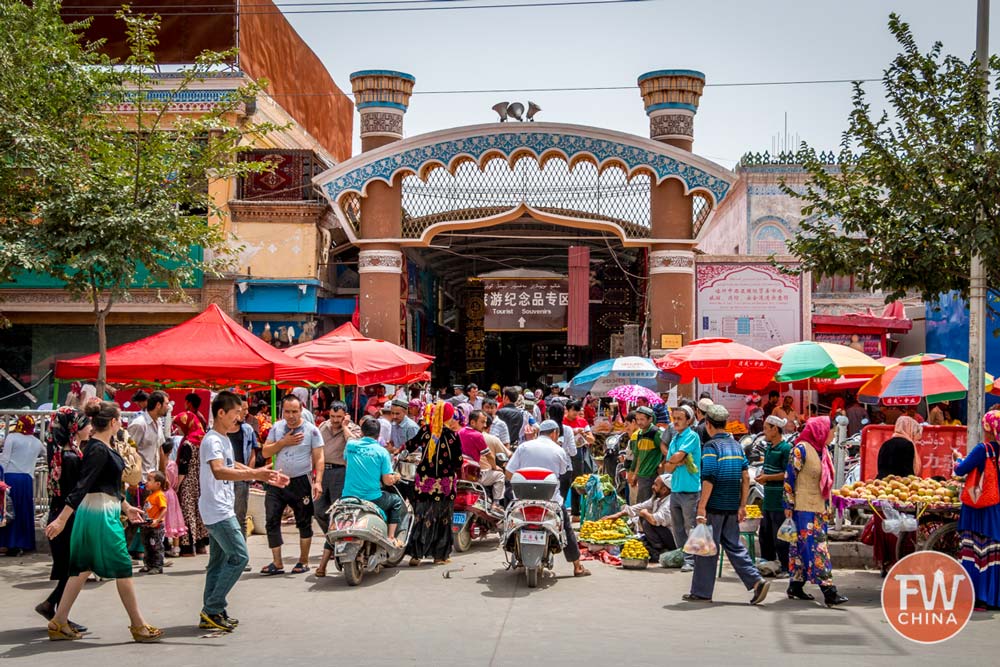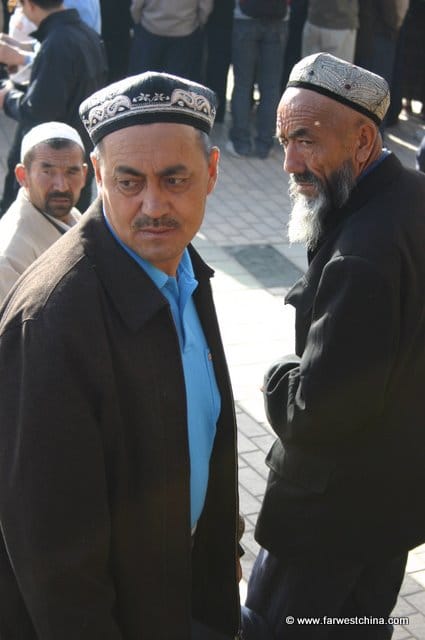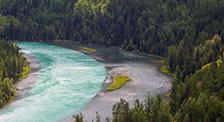Joining 40,000 Muslims Breaking Ramadan in Kashgar
My alarm went off at 5:30am local time this morning and the sky was already filled with the soft light of dawn. This is only my 3rd day here in Kashgar, a lively desert oasis on the western edge of Xinjiang. Although the intense heat has consistently drained me of energy, I was surprisingly excited to jump out of bed.
I was excited because I was preparing to witness one of my favorite events here in Xinjiang – the breaking of Ramadan fast at Kashgar’s Id Kah Mosque.
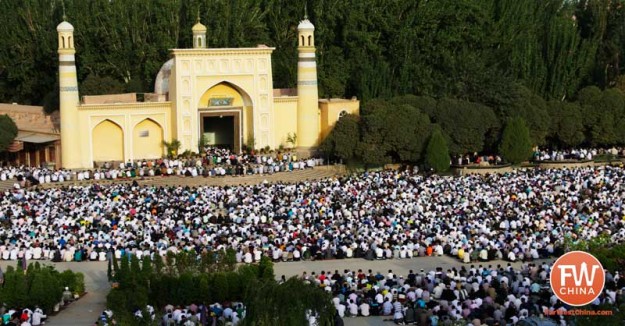
Stepping out of the hostel where I am staying I walked through the wide streets of the new Old Town toward the yellow-bricked Id Kah Mosque.
While the rebuilt history looks nothing like the Old Town I remember, it still retains a comfortable charm that somehow still feels like Kashgar.
Uyghur Muslims from all over the Xinjiang region to attend this prayer.”
Joining a group of Uyghur men slowly making their way in the same direction my eyes were drawn to the sight of a young boy following his father to prayer. With his miniature prayer mat tucked under his arm just like his dad, he reminded me of how my own son is now beginning to mimic everything I do.
Many of these Uyghur Muslims come from all over the Xinjiang region to attend this prayer at the mosque and it’s a huge honor for the young boys to participate.
Upon exiting the alleyway leading to Id Kah I was struck by the view to my left of the beautiful mosque and the endless stream of Uyghur men entering the main gates of the mosque.
The Perfect View of Id Kah
As I crossed the street and approached the locked doors of the 3-story shopping center I began to get a little nervous. I had already spent a good hour the day before scouting out the roof of every nearby building to find my favorite view and then approaching the building security to get permission to enter this morning.
While reluctant, the security guard agreed under one condition – I pay a small “entrance fee”.
While reluctant, the security guard agreed under one condition…”
I now stood in front of the locked door and smiled at the familiar Uyghur guard, hoping he would remember our agreement.
He just stared at me until I slipped him a 50 RMB note (~US$8) and to my relief he silently turned and unlocked the door. Aside from a Getty photographer who had joined me at this building, there was nobody else on the roof.
To my surprise there wasn’t a single military guard on the rooftops and they hadn’t even given me and my camera a second glance when I walked by them in the square.
From my lonely perch on the shopping center room I set up my camera, made myself comfortable and waited.
Call to Prayer at Id Kah
Over the next hour I watched as the square in front of the Id Kah Mosque slowly began to fill with people who were coming from every possible direction.
In the same way I had carefully selected my position on the rooftop, the women and disabled people of Kashgar were already beginning to claim the spots from which they would beg for zakat, the customary practice of charitable giving.
It used to be that celebratory dancing would break out…but unfortunately that practice has been banned…”
Once the inside of Id Kah was packed to capacity with nearly 20,000 Uyghur worshippers, late arrivals began to take their places in the square. From 6am to 7:30 am local time (8-9:30 Beijing time) tens of thousands of more people arrived to take their place in an amazingly quiet and exceptionally coordinated manner.
Old megaphone speakers blasted a sermon being given inside by the imam that could be heard throughout most of the Old City.
At the appointed time the crowd of 40,000+ stood and the call to prayer began. Following the tradition of salat, a type of prayer performed by Muslims all over the world, worshippers bent, stood, knelt and repeated.
Subscribe to the FarWestChina YouTube Channel!
It used to be that celebratory dancing would break out in front of the Id Kah Mosque following prayers but unfortunately that practice has been banned for the past few years for what they say are safety concerns.
I watched in disappointment as everybody quietly exited to return home for private celebrations.
That is to say, most people were quiet…but not everybody. The beggars who had strategically positioned themselves throughout the square prior to prayer were now wailing, holding their sick child and crying for the mercy and generosity of Allah.
Most men came to the prayers this morning with pockets full of one yuan notes (approx 15 US cents) which meant that many of these beggars were raking in what must have been exponentially more than the average day on the streets.
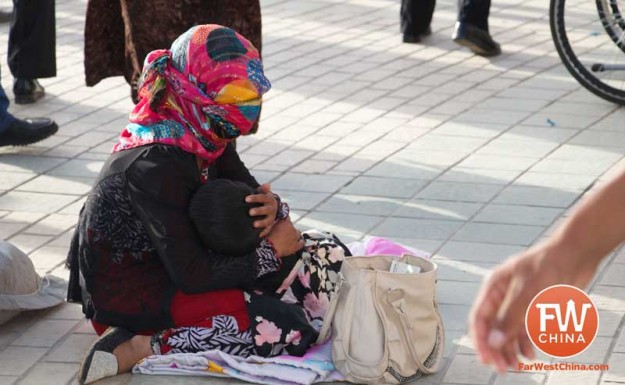
I walked back to my hostel this morning with mixed emotions. While it was exciting to have a birds-eye-view of the event, I felt like there weren’t as many participants as in prior years. Perhaps it was the presence of military who, although mostly hidden behind the trees, seemed to dampen the overall mood of the morning.
Perhaps it was the unreported riot that happened 24 hours earlier in a small town just south of us. Or perhaps I’ve just built up this event in my memory as something bigger than it actually was when I first saw it in 2008.
For the first time since arriving in Kashgar I am seeing Uyghur men eating at the food stalls during the day, enjoying the fact that they are no longer under the restrictions of Ramadan.
My stomach impolitely reminded me that in the rush to get out this morning I didn’t get any breakfast so I sat down and decided to join them.
Additional Kashgar Information:
If you’re planning to visit Kashgar anytime in the near future, check out a few of these helpful resources:
- The FarWestChina Kashgar City Guide gives a good travel overview of the city.
- I’m staying at the Kashgar Old Town Youth Hostel which has been excellent, although I’ve also tried the Kashgar Pamir Hostel which was good.
- For those who are interested in what remains of the Kashgar Old Town.

